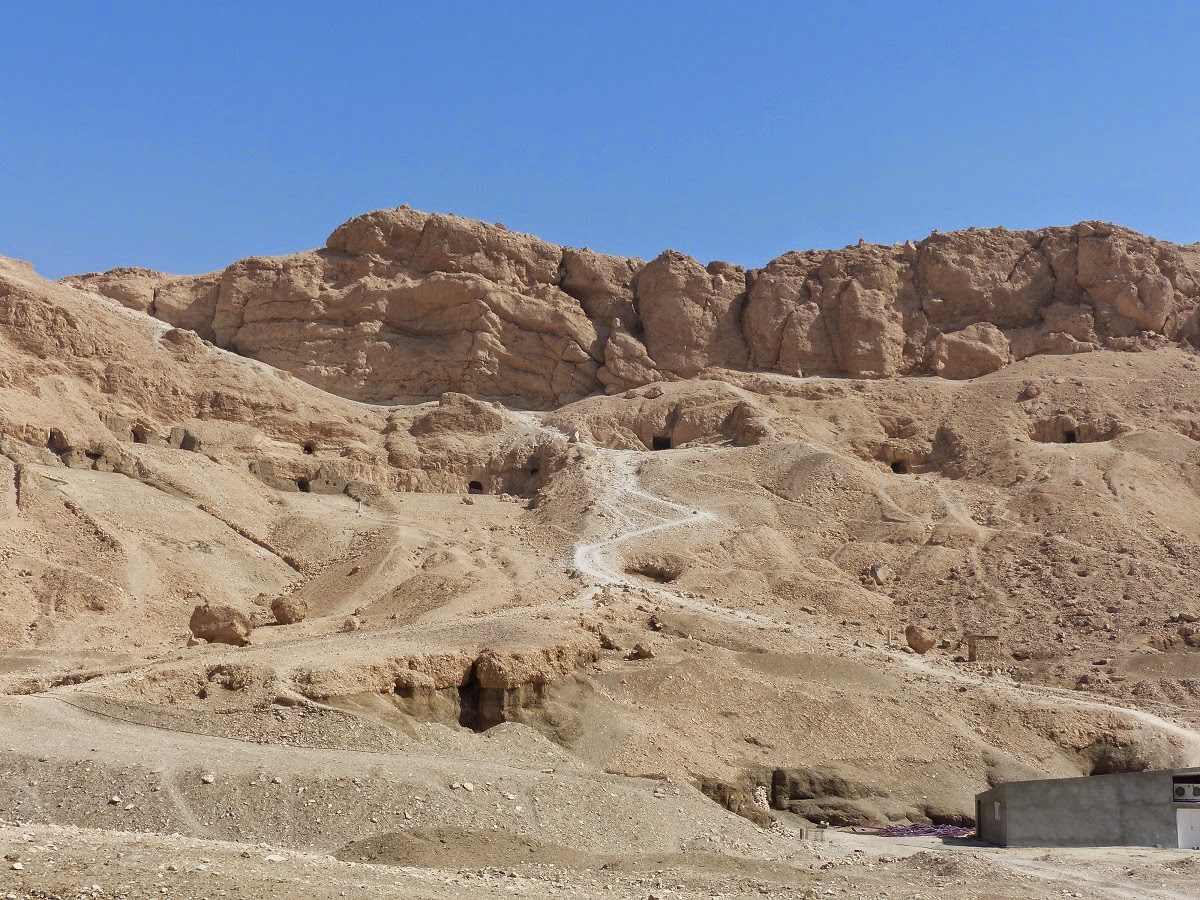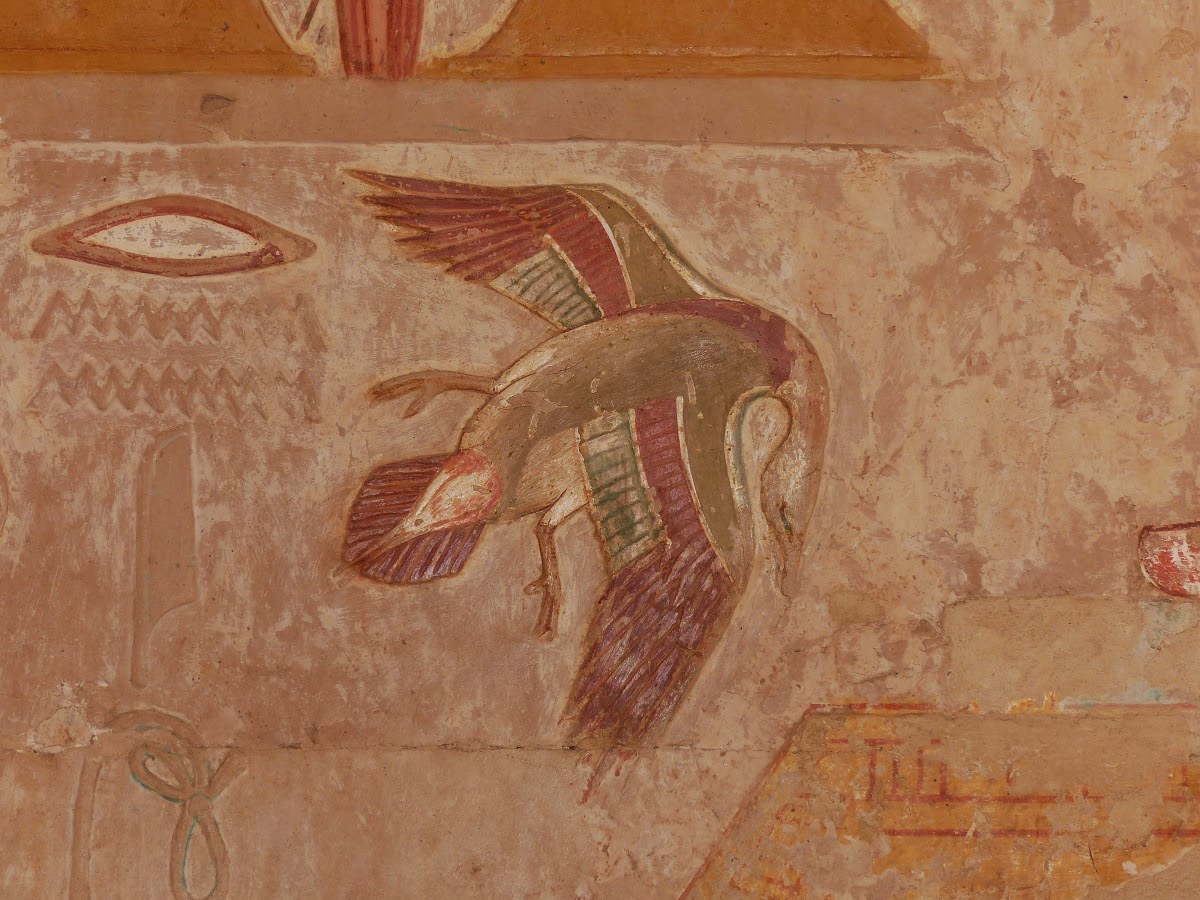After
Aswan I went North along the Nile to Luxor. And Luxor is located right on the
Nile and has a couple of large old temples (Luxor and Karnak temples) from the
“Middle Kingdom” period of Egyptian history (3000-4000 years ago I think) The
temples are pretty well “destroyed” of course after that many years of abuse
but they used such large chunks of stone that there is still a lot that is
intact and its very impressive.
But the
good thing about them is that Im allowed to take pictures whereas in the
museums and inside any tombs I am not. And the amazing thing is that after
thousands of years, the painting of the figures in on the temple walls are
still surprisingly clear and colourful. The artisans used natural oxides and
ground semi-precious stones for the pigments and they just don’t change over
time… Lapiz for blue, malachite for green, manganese oxide for black and iron
oxide for red; not sure what they used for yellow. But the figures on the walls
are not really “art” as we think of it and there is nowhere near the creativity
and variation in forms that would be expected from artists… Its more like
“craftsman” work where the forms of the figures were always strictly controlled
to adhere to “ideal standards”, and the “stories” and records that the figures
depict are consistently the same stories in each temple etc… It was all very
controlled… And so was the painting… There are no graded or blended colours its
all distinct sections of black white red green yellow and blue… But still, that
I can see the figures largely as they were when freshly painted thousands of
years ago is truly amazing!
But the
big thing to see in Luxor is the “Valley of the Kings”.
The
valley is actually quite a small gully and its located on the outskirts of what
was the ancient city of Thebes, which in turn is located about 10KmWest of
Luxor (not sure if it was always off to one side of the Nile or if the river
may have changed course a bit over the millennia?). Anyway, the “valley” was
the burial place for at least 60 kings of the middle Kingdom period, and they
are all located within a few hundred meters of each other… But its not much to
look at from the outside, just a dry dusty/rocky gulch with no plants whatsoever
and a bunch of tunnels burrowed down into the ground.
During
the height of the old Kingdom the pharaohs in the Nile delta got very grandiose
and managed to build the great pyramids of Giza, but then the old kingdom
declined and after some centuries of internal turmoil, the middle kingdom
blossomed. But the kings of this period had changed their burial rituals and
instead of creating massive pyramid tombs that took many decades and vast
amounts of resources to construct, they decided to be buried under-ground in
the shadow of a naturally pyramid shaped mountain here at Thebes… or so Im told
anyway. But they didn’t just opt for a simple hole in the ground, no, the tombs
are delved deep down into the roots of the mountains with tunnels up to a 1km
long. And the tunnels have multiple chambers along their length and all of the
walls of the tunnels and chambers are covered in elaborate hieroglyphic
“stories” and figures etc The tunnels
and chambers were delved quite precisely into the mountain rock (which is mixed
sedimentary type material). The tunnels all have neatly rectangular
cross-sections and are cut in very precise straight lines, but the rock was
quite friable and after digging the tunnels and chambers the walls were quite
rough. So, they plastered all the interiors with a white clay and smoothed it
all very well… Then the artisans went toi work and carved into the soft clay
“skin” all the images and verses that were wanted (in fact most of the stories
are in the form of instructions for the dead kings spirit to reference and thus
successfully navigate the perilous path of the underworld and make it to heaven
(or something like that!). Then after the figures were all carved by hand (and
there are many many thousands of individual glyphs as well as the large images
of offerings to all the Egyptian gods), they were then individually painted…
And again, the colours here are still vividly bright and just as they were
thousands of years ago… amazing!
There is
far less damage to the images down in the tombs compared to up in the temples
on the surface, but there is still quite a lot of damage. You see, almost all
of the tombs have been “open” since antiquity and grave robber had done their
work well for centuries if not millennia. And the upper sections of the tombs
were used as chapels by later Christians etc too… But there is still a
fantastic amount to see and I was very glad I went and had a look. But again
the down-side is that the current Egyptian antiquities administration does not
allow any photography in the tombs so I have no pictures to share… I was told
the justification (outside the obvious “don’t use a flash” restriction) was
that if they don’t allow pictures than more people will come to see the
temples/tombs in person!... If that is the reason behind the “no pictures” rule
then I think its terribly misguided…Just because there are pictures available
of the Mona Lisa painting on the internet doesn’t mean I don’t want to see it
in person myself one day… But that may just be a rumor… Id like to have a few
pictures but I respected the rules and so I only have words to share with you.
I was very
impressed and I was glad I went to see the tombs J







































